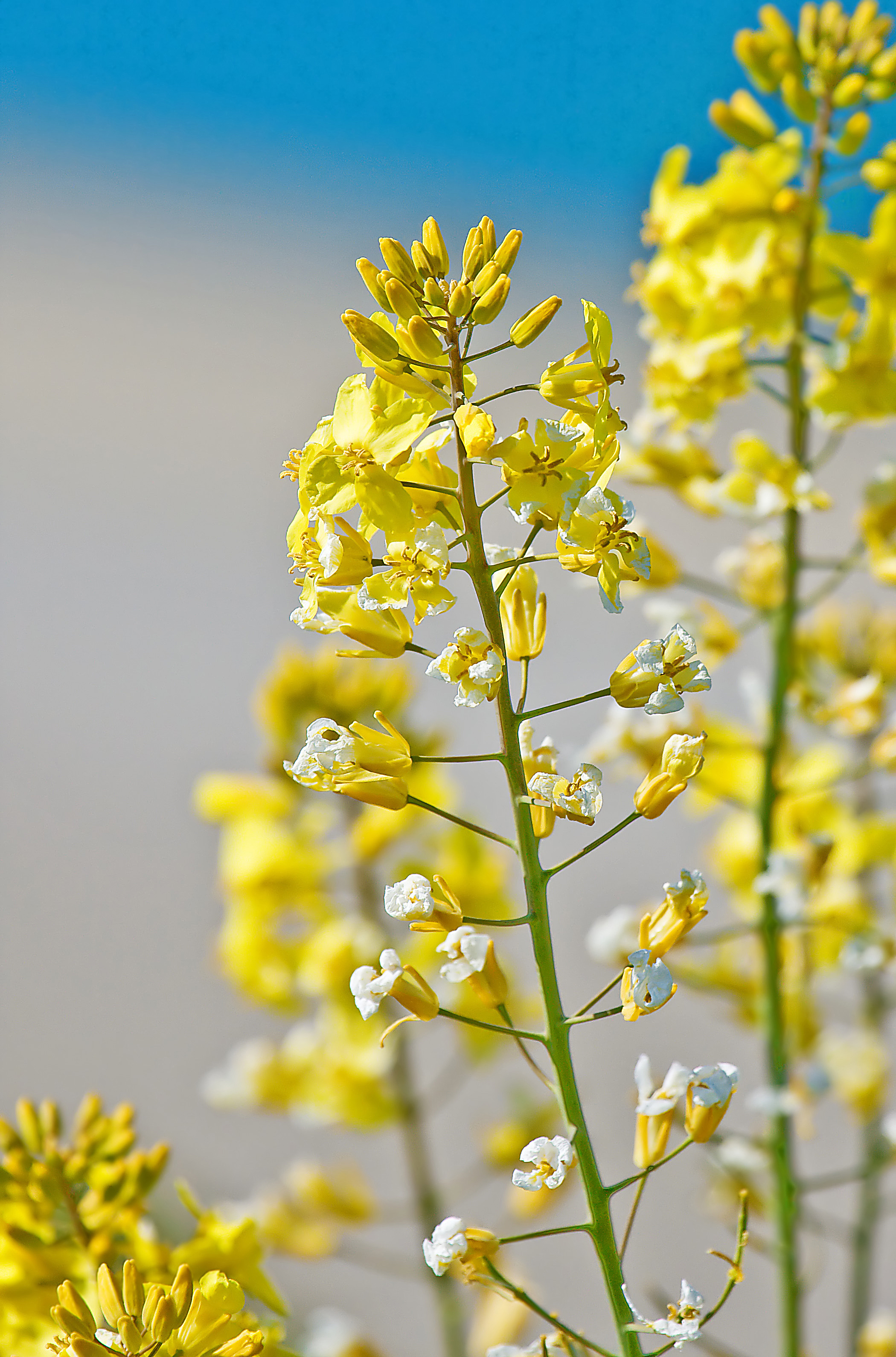 |
| Wild Mustard. Picture from Wiki Commons |
An assumption was made that classic Darwinian mechanisms would render GM plants uncompetitive and therefore self-limiting outside of cultivation.
Added to this was a lot of wishful thinking about the effectiveness of man-made protocols to prevent gene 'escape'.
Since then, the rarity of reported GM introgression into the wild has been an additional excuse to dismiss environmental risks.
In many cases, the assumptions and wishful thinking may be true. But there's certainly one major GM crop which doesn't, and never could be expected, to fit the man-made mould.
Canola, a variety of oilseed rape, has 15 close relatives in the mustard family (some of which are noxious weeds) with which it can interbreed. Its seeds are small and impossible to contain during harvesting and transportation. Up to 30% of the crop can end up in the soil at harvest, and spillage along trucking routes is inevitable. Add to this, significant seed dormancy for up to three years, plus engineered herbicide-resistance genes: the emergence of volunteer GM canola in fields and roadsides which are routinely doused in herbicides can be considered a foregone conclusion.
In Canada and more recently Australia, widespread escape and persistence of GM canola in roadside plant populations was noted very shortly after commercial release of the crop.
However, America's wholesale embrace of GM crops has been accompanied by a don't-look-won't-see attitude. It's taken more than a decade for a meaningful study into GM canola escape from US fields to be carried out. The results are not reassuring.
A team of scientists from three US universities and the Environmental Protection Agency measured feral canola abundance across North Dakota, the dominant canola-growing state. Plants were tested for glyphosate- (Roundup-) and glufosinate-resistance. The authors note that total herbicide-resistance spread was under-reported because they did not have a means to test a third trait, Clearfield-resistance.
At some locations there were thousands of GM plants growing, and in some spots GM canola was the only thing growing. The feral GM population was widespread, well-established and included individuals with stacked herbicide-resistance genes never bred by man. In other words, the GM plants were very happily inter-breeding outside of cultivation.
But worse, the escaped genes didn't just abound predictably beside highways and sites of cultivation. GM patches were also found in some remote areas.
The authors pointed out other human activity was instrumental in spreading GM around. For example, the collection of fill-dirt from gene-contaminated sites for road construction was visibly moving the GM seed to distant locations
In Western Australia, only one year after the introduction of GM canola, a truck fire has highlighted how difficult it is to clean up a contaminated site, even when the escape is localised and known.
Unlike America, Western Australia has a number of conventional farmers who objected vociferously to the introduction of GM canola because it threatened their non-GM export market. These farmers have been watching the consequences of the accident very closely.
They point out that the overnight clean up of the site couldn't have been done effectively in the dark, and that the road was immediately re-opened to traffic. This, plus flocks of parrots which were seen feeding on the spilled seed, would spread the GM canola far and wide. Part of the spillage seems to have been 'dealt with' by spreading it along the roadside where the seed soon began to sprout.
Questions are of course being raised as to who exactly is responsible. Is it Monsanto who owns the seed? Is it the haulage company? Is it the government which allowed GM canola in the first place, and has neglected to implement adequate environmental contamination-control procedures?
What is very clear to the Western Australia farmers is the GM-free zone they requested, and which was denied because it was too costly, too time-consuming, and too complicated to administer, would have been much cheaper, quicker and simpler to administer than dealing with the environmental damage and complex network of legal responsibilities highlighted by this spillage.
OUR COMMENT
Due to the nature of canola seed and pollination, environmental contamination has been rapid. This doesn't mean other GM crops will be less of a problem, just that they may take longer to become a reality.
The biggest warning here is against the development of industrial chemicals and pharmaceuticals in GM food crops or their relatives: their multiple infiltration into the food chain and environment is only a matter of time.
Urge food manufacturers to demand that this nightmare scenario of dangerous chemical pollution of your food supply can never unfold.
SOURCES
- Meredith G. Schafer, et al., 2011 The Establishment of Genetically Engineered Canola Populations in the US, PloS ONE, 6:10, October 2011
- Margaret Munro, Genetically modified canola goes wild, The Vancouver Sun, 6.10.11
- Truck fire spills GM canola at Williams, WA, Gene Ethics Media Release, 10.08.11
- Lawyers to provide legal advice and support for GM free growers, The Safe Food Foundation Media Release, 11.08.11
- GM crops could be an issue in NSW, ABC, 15.08.11
- GM contamination rampant at canola spill site, Gene Ethics, 15.08.11
- Paul Sellars and Peter Hemphill, SA stands firm on canola ban, Weekly Times, 10.02 10
No comments:
Post a Comment
Thanks for your comment. All comments are moderated before they are published.